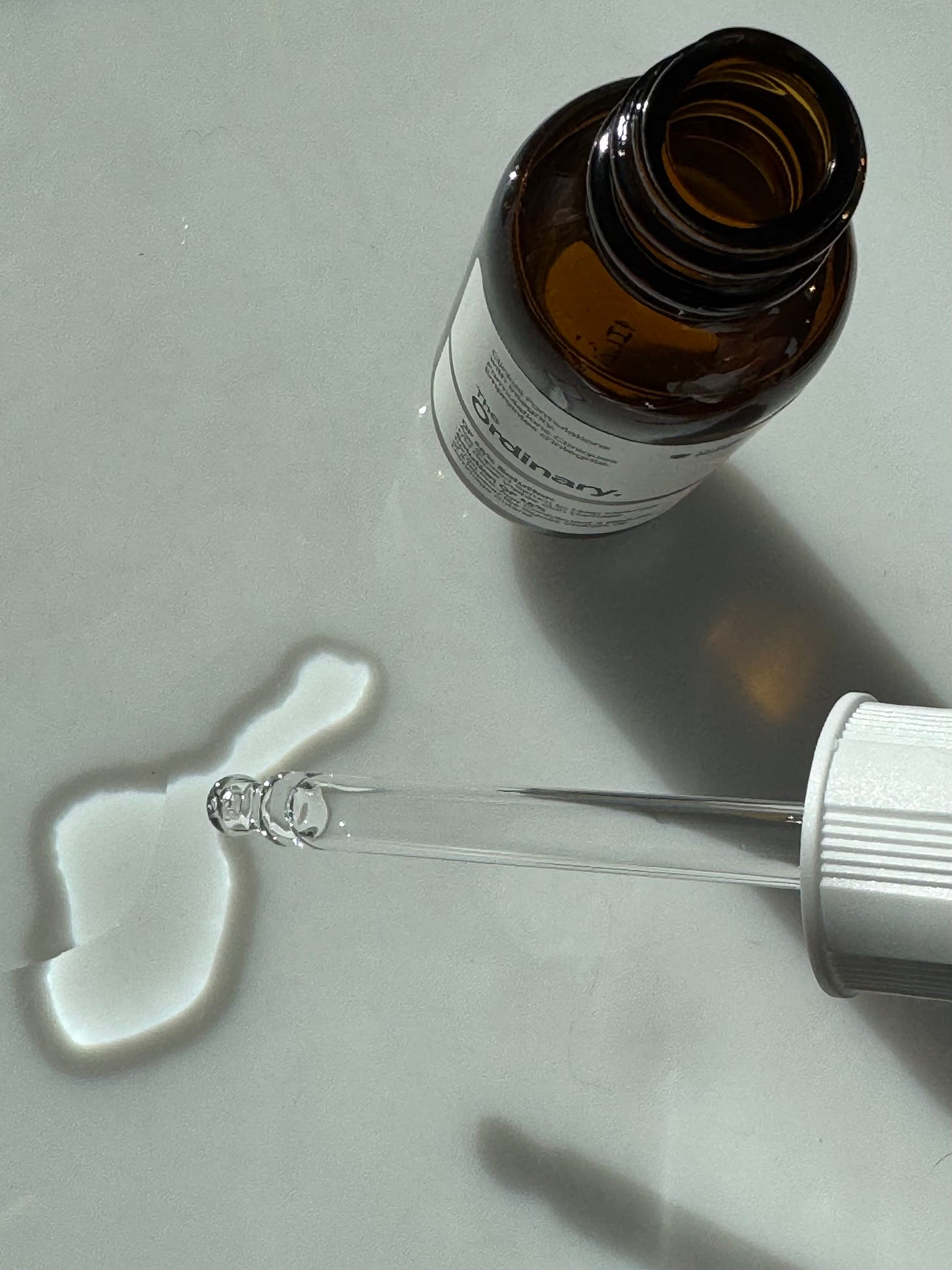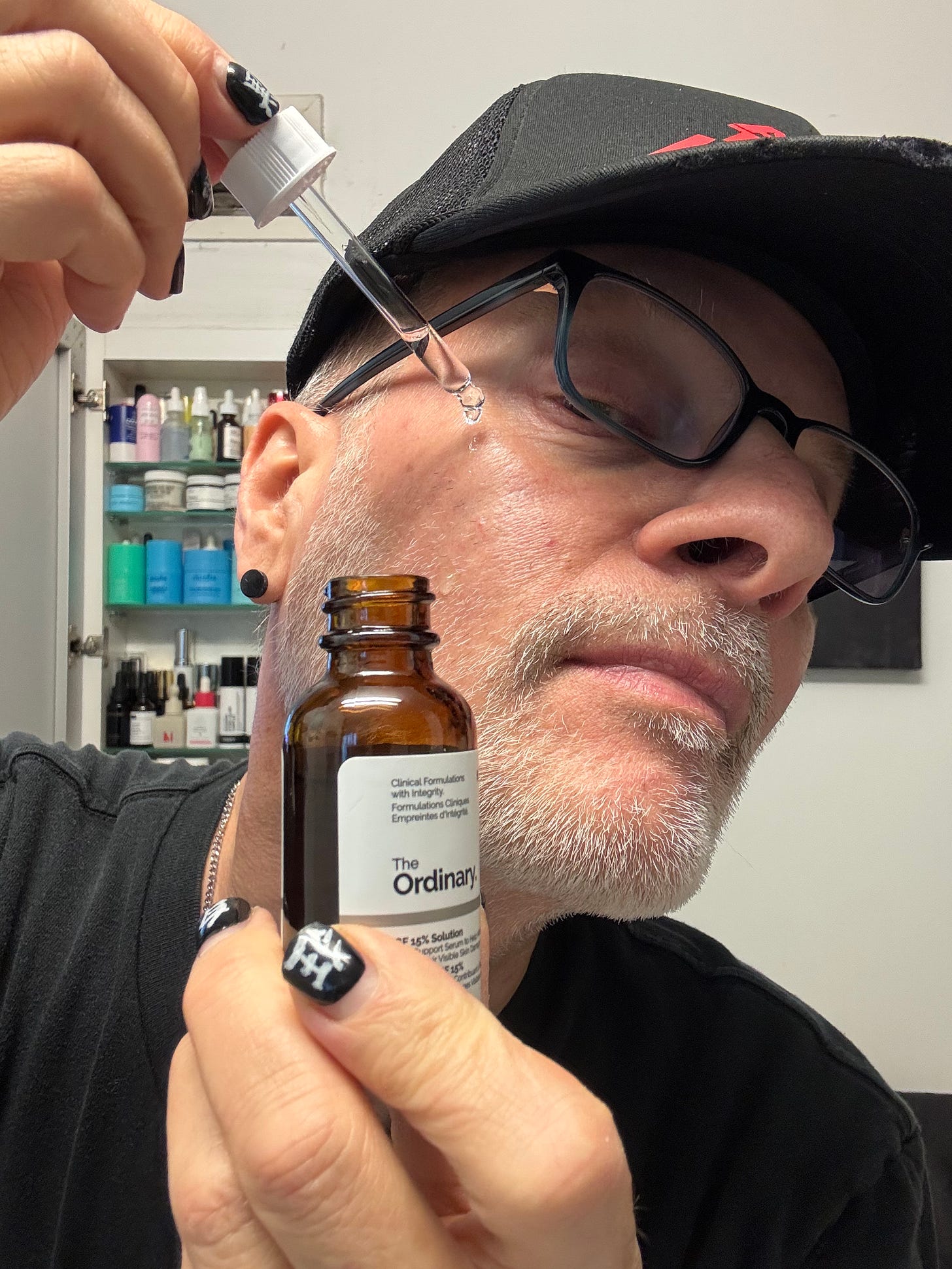Demystifying Growth Factors and Why The Ordinary's New GF 15% Age Support Serum Isn't Worth the Hype
Q&A: What are growth factors? Can I apply growth factors and see anti-aging benefits? What does The Ordinary's GF 15 Serum do?
There’s no doubt skincare innovation has accelerated markedly in the past year.
Few people had ever heard of exosomes before anti-aging serums with exosomes suddenly hit the consumer market after a decade as your dermatologist’s best kept secret.
I explored common questions like “what are exosomes” and “what do exosomes do for your skin” on my podcast: Demystifying Exosomes with Board Certified Dermatologist Dr. Jen Haley.
Just a few weeks ago, The Inkey List introduced their $22 Exosome Hydro-Glow Complex Serum, making exosomes a household word – and bringing an affordable face serum with exosomes to Sephora’s shelves. Even Forbes magazine picked up on the hot new ingredient trend in a recent article titled, Exosomes: The New Frontier Of Skincare.
But while exosomes are new to the scene, retinoids and epidermal growth factors (EGFs) seeped out of derm offices years ago. Retinol face creams have been widely available since the early 1990s. And it’s been 15 years since the pioneering Bioeffect EGF Serum with epidermal growth factors was first introduced. At $175 for a 0.5 oz. serum, it’s hardly accessible to most consumers.
As with so many ingredient technologies, The Inkey List and The Ordinary make many of the best skincare actives accessible to the rest of us. This month, The Ordinary introduced their new GF 15% Age Support Serum – an anti-aging treatment designed with three different types of growth factors.
My detailed review of The Ordinary’s GF 15% Age Support Serum is below.
What Are Peptides? Why They're Key to Your Skin's Youthful Bounce.
I was recently invited to appear on the Radiance Revealed podcast hosted by board-certified dermatologist Dr. Jen Haley. The topic: the Five Hottest Ingredients in 2025.
But first, what are growth factors? Well, they’re naturally occurring, specialized proteins that act as signaling molecules to regulate cellular growth, proliferation, and even cell differentiation in the skin.
In dermatology, growth factors were initially popularized for their unique wound healing properties and benefits for tissue repair after in-office procedures. Epidermal growth factors, for example, are used to accelerate post-treatment recovery from invasive procedures like microneedling, laser treatments, chemical peels and IPL.
As exosomes, which are most effective when applied by a dermatologist on damaged skin or through microneedling, growth factors are challenged by the 500 Dalton Rule which governs the penetration of molecules into the skin barrier.
Growth factors are actually much larger than exosomes, with a molecular weight often greater than 15,000 Daltons (Da) – way beyond the 500 Da weight considered ideal for penetration. They’re also hydrophilic, meaning they have an affinity for water; they interact with water molecules and dissolve or disperse in water. Not oil.
The skin barrier – and greater epidermis below the stratum corneum – is rich in lipids, or fats, like ceramides, cholesterol and fatty acids. Because of the skin’s dense oil composition, hydrophilic molecules like growth factors simply do not penetrate well, if at all, limiting their ability to perform as desired when applied topically.
What are growth factors and what do they do in skincare?
Growth factors are naturally occurring proteins that play a crucial role in regulating various cellular processes in the body. Considered “signaling molecules,” they stimulate cell growth, cell proliferation and differentiation, tissue repair, and even cell survival.
Growth factors are typically secreted by cells and can act on nearby cells or on the cells that produced them. The body creates growth factors to heal damaged skin, particularly skin damaged as a result of photoaging (sun damage) – responsible for 90% of the visible signs of skin aging.
As a key driver of cell turnover, growth factors promote the production of structural proteins like elastin and collagen, which are crucial for combatting skin damage and for preventing the formation of fine lines and wrinkles.
While they sound like sexy scientific innovation, growth factors applied topically don’t (and can’t!) do everything they are known to do inside the body. When applied to the skin, growth factors may have some ability to interact with receptors on the surface of skin cells in the stratum corneum, or skin barrier. But that’s not assured.
With the potential to boost collagen production and promote cell turnover, growth factors may help target the appearance of fine lines and wrinkles, improve skin texture, and even out skin tone. But that dastardly 500 Dalton Rule gets in the way.
Even so, powerful actives like Retinol and Vitamin C are far more effective at stimulating collagen production in the skin. Unlike growth factors, both of these molecules fall below the 500 Dalton Rule governing ingredient penetration.
Notably, growth factors can help strengthen the skin barrier (similar to Niacinamide), making the barrier more resilient to external environmental stressors like UV and pollution.
Sources: NIH, National Library of Medicine, PubMed Central - Physiology, Growth Factor; NIH, National Cancer Institute - Growth Factors; Paula’s Choice - Growth Factors At a Glance; Biopelle - How Do Growth Factor Skin Care Products Benefit You?
The Ordinary GF 15% Age Support Serum Product Review
What The Ordinary does best is to bring simple, pro-skin health molecules to the broadest range of consumers. This strategy is most beneficial when anti-aging actives are expensive or priced out of reach by luxury skincare brands. And it’s certainly the case with growth factors. The best growth factor serums and creams can cost more than $100 an ounce.
But here’s the simple truth about growth factors: they have a large molecular weight, significantly restricting their ability to penetrate the skin barrier – no matter the formula. The 500 Dalton Rule cannot be set aside because it doesn’t fit the product messaging of a skincare marketer – whether SkinMedica’s $230 TNS Recovery Complex or The Ordinary’s GF 15% Age Support Serum. At just $15.50, it’s a fraction of the cost.
But does it work as expected?
To be clear, The Ordinary’s new serum features three distinct growth factors: EGF, IGF-1, and TGFβ-2. These appear in the product INCI as Nicotiana Benthamiana Hexapeptide-40 sh-Oligopeptide-1 (EGF), Nicotiana Benthamiana Hexapeptide-40 sh-Polypeptide-76 (TGF) and Nicotiana Benthamiana Octapeptide-30 sh-Oligopeptide-2 (IGF).
The molecular weights of each of the three growth factors included in The Ordinary GF 15% Age Support Serum exceed the 500 Dalton Rule governing ingredient penetration:
Nicotiana Benthamiana Hexapeptide-40 sh-Oligopeptide-1 (EGF): Estimated molecular weight: ~660–1,500 Da;
Nicotiana Benthamiana Hexapeptide-40 sh-Polypeptide-76 (TGF): Estimated molecular weight: >10,000 Da;
Nicotiana Benthamiana Octapeptide-30 sh-Oligopeptide-2 (IGF): Estimated molecular weight: ~7,480–8,500 Da.
This conundrum is not exclusive to growth factors. Similarly, collagen (300,000 Da) and Hyaluronic Acid (6,000 Da to 10 million Da) do not penetrate the skin barrier well, if at all. However, all three molecules – growth factors, collagen and HA – are considered beneficial to skin health.
What about the The Ordinary’s GF 15% Age Support Serum? When used as a component in a comprehensive skincare routine, it’s most likely to help improve skin health by strengthening the skin barrier. And it may even help to repair some visible skin damage.
Just don’t count on it to deliver the benefits of growth factors found naturally in your skin.
Pros & Cons
What I like about it: The Ordinary GF 15% Age Support Serum is a pro-skin health anti-aging serum that helps to strengthen the skin barrier to defend against aging. I love the lightweight texture and layerability of the formula and its ability to promote healthy skin when used in a pro-skin health routine.
What I don’t like about it: While I love the lore around growth factors as much as anyone, they simply cannot do what they do in the body when applied topically.
Who it’s for: All skin types.
SHOP THE BLOG: Want to try it for yourself? Purchase The Ordinary GF 15% Age Support Serum for $15.50 here.
Product links:
The Ordinary GF 15% Age Support Serum
The Inkey List Exosome Hydro-Glow Complex Serum
SkinMedica TNS Recovery Complex






